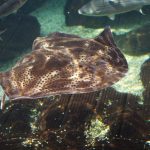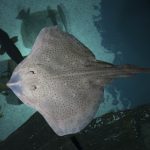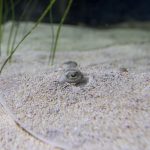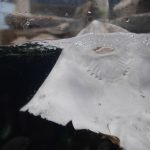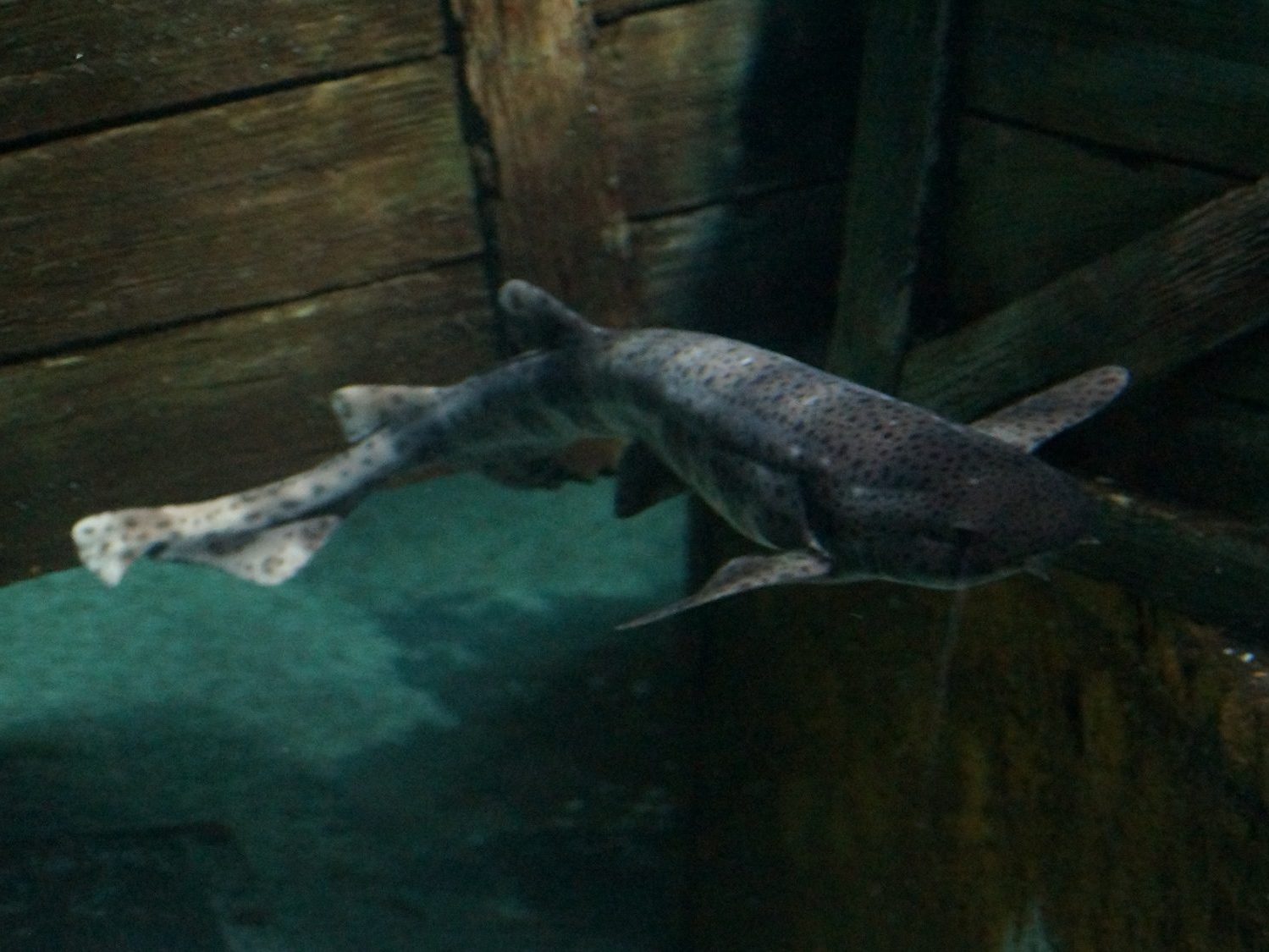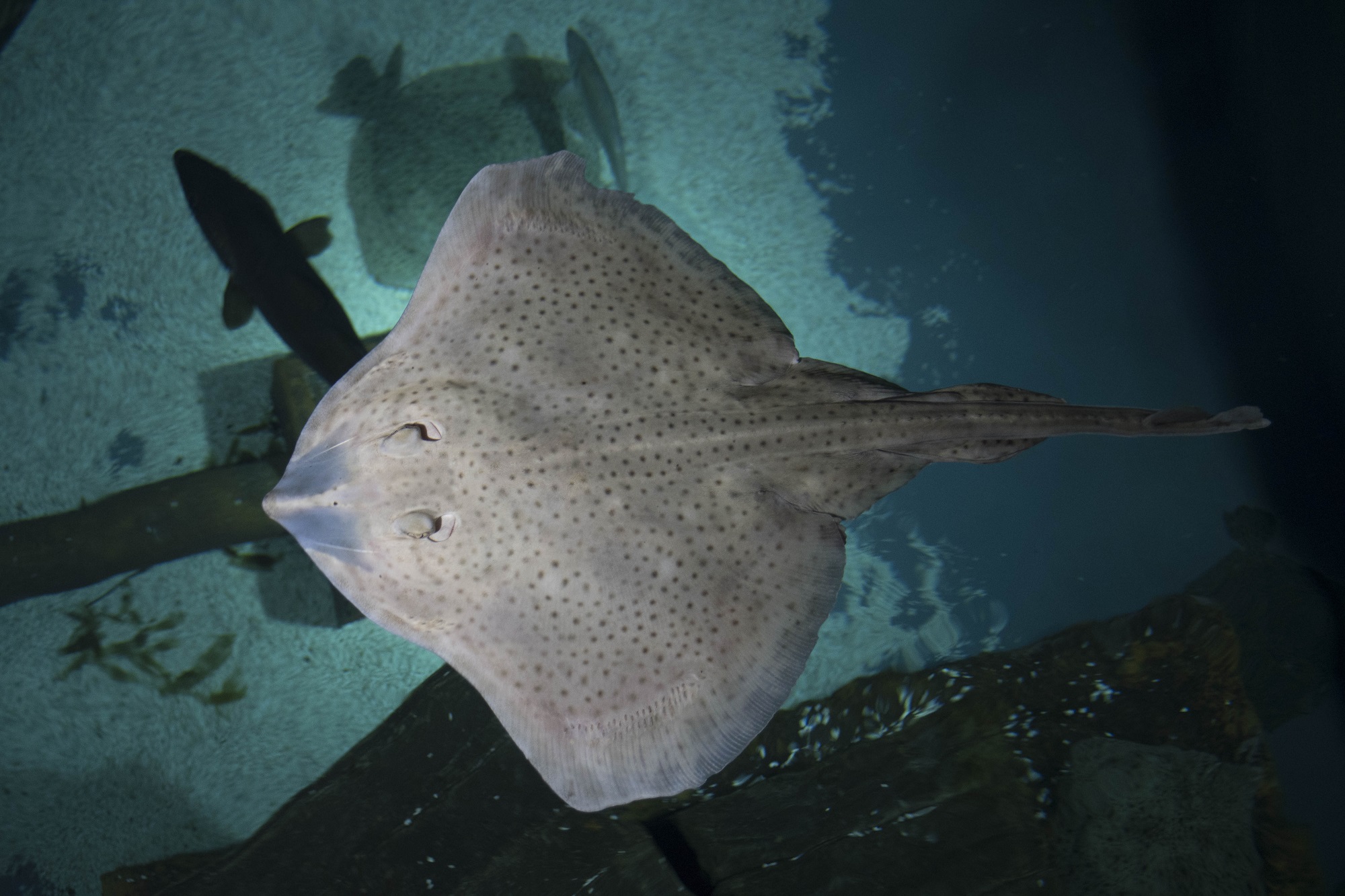
Rays are remarkable marine creatures. Around since the time of the dinosaurs, there are over 600 known species in our seas and oceans – a handful of which you can see for yourself right here at Bristol Aquarium’s Bay of Rays.
From common to cownose, blonde to painted – Bristol Aquarium is home to six unique species of rays and skates, giving you a fascinating glimpse into the diversity of these otherworldly-looking fish. Watching them glide gracefully through the water is a spectacle in itself, and one that never gets boring no matter how long you watch.
In the meantime, why not learn more about rays and skates ahead of your visit with our essential fact file below?
How to identify a ray
Although it’s not always easy to tell different species of rays apart, you should have no trouble spotting a ray a mile off! After all, these animals are characterised by their large, wing-like pectoral fins, as well as the fact that their eyes and tails are all on the upper “dorsal” side, while their mouths and gills appear underneath on the lower “ventral” side.
Remember, too, that just like their close cousins, the shark, rays have no bones in their bodies. Instead, their entire skeletons are made from cartilage, which not only makes them super strong but is also much more efficient in the water – making rays some of the speediest and most agile swimmers in our seas.
When it comes to identifying different species of rays at Bristol Aquarium, here are a few tips on how to differentiate the various species on display in our Bay of Rays exhibit.
| Ray species | Visual characteristics |
| Cownose ray (Rhinoptera bonasus) | Cownose rays are easily identified by their distinct heads, which feature two lobes like a cow’s nose. They typically grow to around 1.2m in diameter. |
| Painted ray (Raja microocellata) | Painted rays are diamond shaped with a short, pointed snout. Brown in colour, they grow to around 90cm in diameter. |
| Blonde ray (Raja brachyura) | As their name suggests, blonde rays are a light, sandy colour. Their pectoral fins sweep to a curved point, and they grow to an average size of around 1.1m. |
| Common stingray (Dasyatis pastinaca) | The common stingray is characterised by its curved pectoral fins and spotted dorsal body. They’re bigger than some ray species, growing up to an impressive length of 2.5m. |
| Thornback ray (Raja clavata) | You guessed it: thornback rays are known for their thorny spines, which extend from the eyes all the way down their tails. Adults typically grow up to 1m in length. |
| Undulate ray (Raja undulata) | The undulate ray is beloved for its perfectly symmetrical patterned body and pectoral fins. Like the thornback, it has an average size of around 1m. |
The lifecycle of rays
Rays are unique marine creatures in that they’re ovoviviparous, meaning that they lay eggs within their own bodies before hatching live young. Skates are the exception to this, as they lay eggs outside the body.
Typically, a female ray will carry between 5-15 eggs which hatch inside her; juveniles are then born fully ready to fend for themselves, with all the instincts they need to survive and hunt.
Many species of rays, including the cownose, form large schools which are rather theatrically named a “fever of rays”. They also partake in eventful mating seasons, in which male rays perform a display of courtship.
Although the lifespan of rays does differ slightly by species, most animals live an average of 15-25 years, and sometimes longer in captivity.
Where do rays live?
Rays are found in every ocean on Earth, with eighteen species found in UK waters alone, including the thornback ray, the blonde ray, and the common stingray. As bottom-dwellers, rays typically stay close to the seafloor and are often found at remarkably shallow depths, though there are many species of deep-water rays and skates too.
How do rays eat?
Living on the bottom of the sea floor, rays and skates glide along sandy plains searching for hidden prey. They both have a super-sense which allows them to detect electromagnetic signals sent off by fish or crustaceans under the sand. These signals are as small as detecting a heartbeat from an unsuspecting fish!
Rays and skates have strong jaws with flat teeth able to crack open the shells of their favourite prey, molluscs and crustaceans. If while foraging for food they need to make a speedy getaway from a predator, some rays have stings in their tails called barbs which they use to protect themselves. These barbs contain paralytic venom which slows the pursuing predator allowing the ray to escape!
Do all rays sting?
Don’t be perturbed by the ferocious tails that most rays and skates have, as not all species are capable of delivering a painful sting. Certainly, some rays have a barb and sting at the end of their tails, but most do not.
Note too, that even rays with a stinger aren’t innately aggressive. They use their tails purely for defence, so are only likely to sting a human if they feel threatened – or if you accidentally stand on one in shallow water!
Where to see rays at Bristol Aquarium
Bristol Aquarium is home to several species of rays and skates, some of which are found locally in UK waters. The Bay of Rays at Rocky Shores is the primary spot to take in these fabulous winged fish, while you can also see the elegant and highly distinctive cownose ray over at our Coral Seas exhibit.
Fun Facts about rays
Impress your pals with your ray-based know-how ahead of your visit to Bristol Aquarium with these essential facts…
- Rays detect prey with electro-sensors called Ampullae of Lorenzini. These electric fields are produced by jelly-filled pores, which signal to the fish the best place to find its next meal.
- Most species of rays have been around for over 150 million years, with fossils dating to the Jurassic Period.
- The largest species of ray, the giant manta ray (Mobula birostris) can grow up to 10 metres.
For more cool facts about rays, check out our latest fact-filled blog.
Eager to get acquainted with the rays on display at Bristol Aquarium? Book your tickets today.
Rays and Skates at Bristol Aquarium
We successfully breed some species rays and sharks at Bristol Aquarium so be sure to check out our nursery tanks during your next visit!
Depending on the time of year, you may find shark and rays eggs, little juvenile or larger juveniles maturing before they are released into larger displays.


